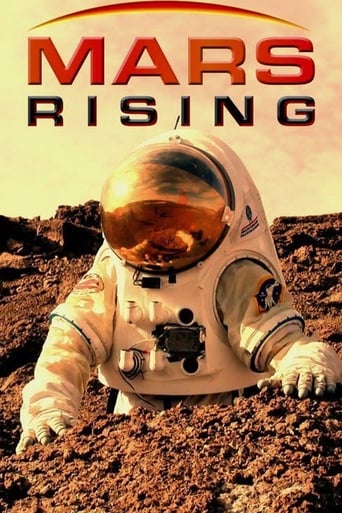Season

Mars Rising - Season 1 Episode 6 Search for Life
The journey to Mars and the search for life on another planet is the most dangerous and compelling mission in the history of space exploration. Bacteria are the most basic and the hardiest life form. And, either still living or now dead, bacteria are one of the things astronauts will be looking for on the Red Planet.
In preparation for the challenges of Mars, scientists are searching for bacteria in the driest and most barren places on Earth. The temperature, valley networks and well-preserved large-impact craters on Devon Island in Canada’s Arctic echo those on Mars. And, 90 per cent of the rocks on Devon Island have bacteria growing on their underside.
Canadian scientist Darlene Lim, a member of the NASA Haughton Mars Project Team, explains her contention that the most primitive forms of life to be discovered on Mars might be carbonate formations similar to those in British Columbia’s Pavilion Lake.
Chile’s Atacama Desert has had little rain in the last 10 million years making it the oldest and driest desert on our planet. Yet the Atacama yields fluorescent minerals and organic matter. Might ultra-violet headlights on a Mars Rover illuminate life forms which are invisible to us in daylight? Geophysicist Pascal Lee theorizes that “it might merely be that we are members of the same family spread over two planets.”
Canadian chemist Alison Skelley is searching for amino acids, one of the building blocks of life, with an ultra-sensitive Mars Organic Analyzer. Bacterial super bugs that once lived on the surface of Mars may have migrated underground, protected from dust and radiation, where only drilling can find them.
In addition to drilling for liquid water, the astronauts will search the caves formed by volcanic lava tubes that have been identified on Mars’ surface. Similar tubes exist in New Mexico where, deep underground, Penelope Boston has discovered white bacterial formations living in near freezing droplets of water, feeding off rock.
Martian bacteria may be hazardous to humans and cause contagion on Earth. Every precaution must be exercised while transporting samples from the Red Planet.
After 18 months searching for life on Mars, the crew must return on a tight schedule with Earth and Mars in the proper alignment. Will their landing capsule be capable of returning the astronauts to the orbiting Mars mothership? If the capsule does not make its scheduled departure, its crew is doomed.

 Download 4K
Download 4K Download 4K
Download 4K Download 4K
Download 4K Download HD
Download HD































